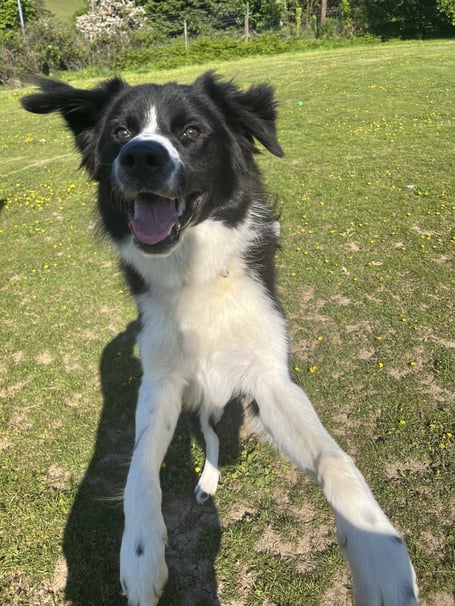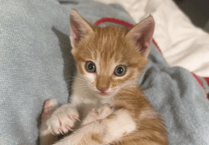The breed of dog we see most frequently in our rescue kennels is the border collie and, to prove the point, we have three of them with us at the moment.
Sheep dogs have been around in various forms for thousands of years.
There are Biblical references to dogs with flocks; Roman scholars wrote about how to train shepherd dogs; and a book called ‘Treatise on Englishe Dogges’, written in 1570, is considered to be one of the earliest references to working sheep dogs in Britain.
The modern day border collie is a product of the pastoral borderland between England and Scotland, where shepherds needed a sturdy, trainable dog that would combine natural herding instincts, intelligence and vigour (enabling it to work long hours, in all weather conditions, over rugged terrain).
The breed of these dogs was not clearly defined, and they were simply referred to as a ‘collie’ or sheep dog until the 1860s.
Several events raised the profile and popularity of what was to become the border collie.
Rumour has it that Queen Victoria took an instant liking to the collies she saw at Balmoral Castle in the Scottish Highlands, making them more fashionable.
The longer-haired collie breed eventually morphed into the rough collie, of Lassie fame, while the border collie continued its role as the tough, hard-working cousin.
The advent of sheep dog trials in 1873 helped to establish the modern border collie’s heritage through selective breeding programmes which prioritized working ability over physical appearance.
This means that border collies come in a remarkable variety of colours and makings – they can be solid, bi- or tri-coloured; red or blue merle, or brindle; and they can have varying amounts of white in their coats.
The colour pattern most commonly associated with the border collie is black with a white blaze, white collar, feet, chest and tail tip.
The coat can be rough or smooth, or anything in between.
Whilst the border collie’s intelligence, endurance and trainability make it an excellent working dog, these traits can make them unsuitable as a pet unless they are homed to owners who understand the breed.
In the absence of adequate physical and mental stimulation they quickly become bored and destructive, and they can develop compulsive behaviours - the most common of these being an obsession with, and a need to lunge at, wheels (on cars, bikes, wheelbarrows … even a child’s roller skates!).
Border collies are remarkable, and they are the most devoted and loyal companions for owners who can provide them with sufficient physical and mental stimulation.
The three we have in our kennels at the moment are all typical of their breed.
Tank, who has a very traditional border collie appearance but who is larger than normal (hence his name!), is a 10-month old bundle of energy who wants to play non-stop in return for cuddles and affection.
He’s pretty good around other dogs, and he’s fine with children, so it won’t be long before he finds a new home.
Nala is a five-year-old collie – a very attractive blue merle.
She lacks confidence and is nervous in new environments and with strangers, and her perfect home will one where she is the only animal in the household.
And as just as three-year-old Buddy went out of the kennels on a trial placement (something we always do before asking potential new owners to formally adopt a dog), two-year-old Harper arrived.
We will assess her for the next week or so, establishing her likes and dislikes and her level of training, so that we can find a new home that suits her best.
If you are interested in finding out more about these collies, please e-mail the kennels team on [email protected]



-(1).jpeg?width=209&height=140&crop=209:145,smart&quality=75)
.jpg?width=209&height=140&crop=209:145,smart&quality=75)
Comments
This article has no comments yet. Be the first to leave a comment.